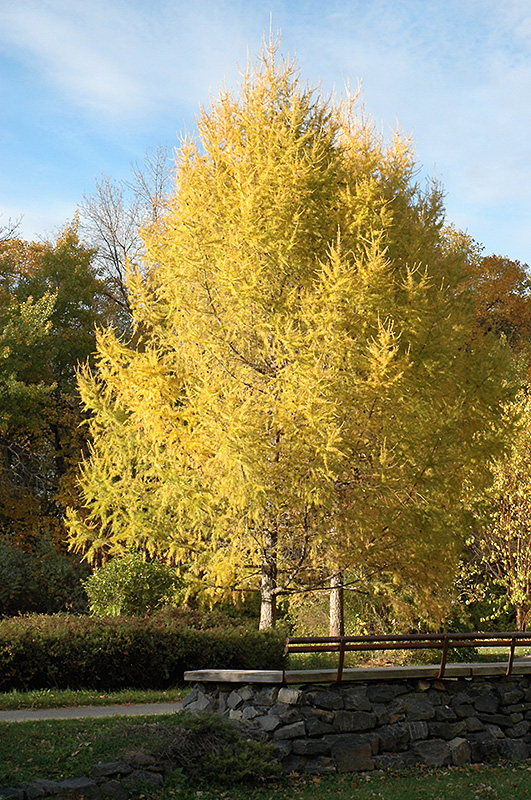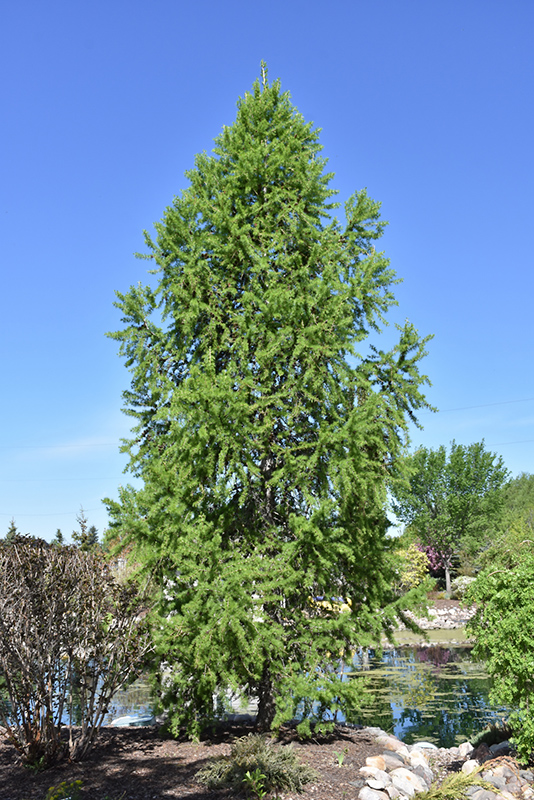Height: 60 feet
Spread: 25 feet
Sunlight:
![]()
![]()
Hardiness Zone: 1b
Description:
A tall, loose coniferous tree with fine, deciduous needles, starting bright green in spring and turning brilliant gold in fall; prefers moist locations and light soils; can look a little odd in winter without needles, but simply glows the other 3 seasons
Autumn Enthusiasm
Fall is for planting! Did you know that fall is the best time to plant your deciduous trees and shrubs? Be the envy of all your neighbors with striking shades of reds, oranges, and purples. Plant something breathtaking today!
Ornamental Features
Siberian Larch is primarily valued in the landscape for its distinctively pyramidal habit of growth. It has rich green deciduous foliage which emerges light green in spring. The needle-like leaves turn an outstanding gold in the fall. The rough gray bark and gold branches add an interesting dimension to the landscape.
Landscape Attributes
Siberian Larch is a deciduous tree with a strong central leader and a distinctive and refined pyramidal form. It lends an extremely fine and delicate texture to the landscape composition which can make it a great accent feature on this basis alone.
This is a relatively low maintenance tree, and usually looks its best without pruning, although it will tolerate pruning. Deer don't particularly care for this plant and will usually leave it alone in favor of tastier treats. It has no significant negative characteristics.
Siberian Larch is recommended for the following landscape applications;
- Accent
- Shade
- Vertical Accent
Planting & Growing
Siberian Larch will grow to be about 60 feet tall at maturity, with a spread of 25 feet. It has a low canopy with a typical clearance of 1 foot from the ground, and should not be planted underneath power lines. It grows at a slow rate, and under ideal conditions can be expected to live for 70 years or more.
This tree does best in full sun to partial shade. It is quite adaptable, prefering to grow in average to wet conditions, and will even tolerate some standing water. It is not particular as to soil type or pH. It is quite intolerant of urban pollution, therefore inner city or urban streetside plantings are best avoided. This species is not originally from North America.



